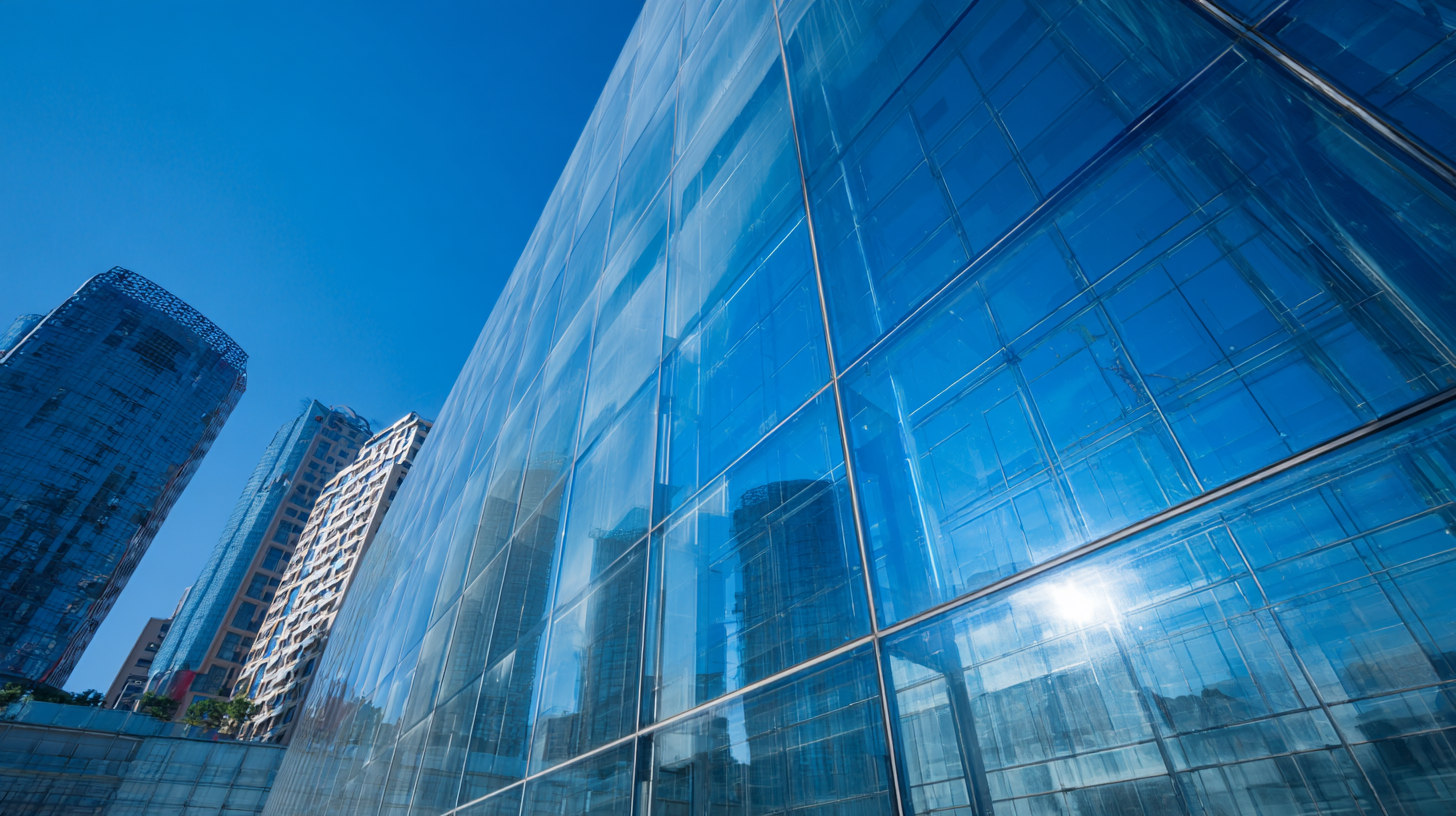
7 Reasons Why Best Tempered Laminated Glass is Dominating the Market Today
In recent years, the demand for Tempered Laminated Glass has surged, driven by its unparalleled safety features and aesthetic appeal. The global glass market is projected to reach $250 billion by 2025, with tempered laminated glass accounting for a significant portion of this growth due to its enhanced durability and sound insulation properties. According to industry reports, the increasing adoption of energy-efficient building materials and stringent safety regulations continue to propel the use of this innovative glass solution across various sectors, including construction, automotive, and architecture.

Furthermore, the tempering process not only strengthens the glass but also offers a unique opportunity for customization, making it a preferred choice among architects and designers. As we delve into the top seven reasons why Tempered Laminated Glass is dominating the market today, it’s essential to understand the impact of these trends on its widespread adoption.
The Rise of Tempered Laminated Glass: Market Demand and Growth Trends
The rise of tempered laminated glass in the market is driven by its exceptional safety features and versatility, making it a preferred choice for a wide range of applications. As construction and design trends evolve, the demand for materials that enhance structural integrity while providing aesthetic appeal is increasing. This trend has paved the way for tempered laminated glass, which not only withstands impact and thermal stress but also offers superior sound insulation and UV protection. The construction industry, fueled by urbanization and innovation, greatly benefits from these properties, thus pushing the market forward.
Furthermore, the growth of advanced glazing technologies, such as Triple Vacuum Insulated Glass (TVIG), reflects a broader movement toward energy-efficient solutions in building materials. With the TVIG market projected to expand significantly over the next decade, other technologies like tempered laminated glass are also set to flourish. As consumers and industries prioritize sustainability, the trend towards laminated glass that contributes to energy efficiency is expected to grow, indicating a bright future for this market segment.
Market Trends of Tempered Laminated Glass
This chart illustrates the growth trends in the tempered laminated glass market based on various factors driving demand in the industry.
Innovative Features of Tempered Laminated Glass and Their Applications
Tempered laminated glass is gaining traction in various industries due to its innovative features and versatile applications. One of the standout aspects of this material is its enhanced safety profile. According to the Glass Association of North America, tempered laminated glass is approximately five times stronger than standard glass, making it an ideal choice for high-traffic areas and structures requiring additional security. This type of glass is manufactured by sandwiching a layer of polyvinyl butyral (PVB) between two layers of tempered glass, which not only provides superior resistance to impact but also minimizes the risk of shattering. In case of breakage, the glass fragments adhere to the PVB, improving safety for occupants.
Additionally, tempered laminated glass offers remarkable acoustic insulation properties, making it a preferred choice in urban environments. The American Architectural Manufacturers Association reports that laminated glass can achieve a sound transmission class (STC) rating up to 40, which significantly reduces noise pollution. This characteristic is particularly beneficial in residential and commercial buildings located near busy roads or construction sites. With the continued growth in construction and architectural design, the demand for tempered laminated glass is projected to rise, driven by municipal mandates for safety and sound reduction in building codes.

Comparative Analysis of Glass Types: Strengths and Weaknesses
When comparing different glass types, it’s essential to look at their strengths and weaknesses to understand why tempered laminated glass stands out in the market. Tempered laminated glass combines the toughness of tempered glass with the safety features of laminated glass. This combination not only offers enhanced resistance to impact and temperature fluctuations but also provides an added layer of security against shattering. If broken, it adheres to an interlayer, minimizing the risk of injury and property damage.
In contrast, while regular glass is more affordable, it lacks the resilience and safety features of tempered laminated glass. Though it can be aesthetically pleasing, standard glass shatters upon impact, posing significant safety risks. On the other hand, while tempered glass is more resistant to breakage than regular glass, it can shatter into sharp pieces upon significant force. Laminated glass, while strong, may not withstand high-impact scenarios compared to its tempered counterpart.
Ultimately, the comparative analysis reveals that tempered laminated glass not only excels in safety but also meets diverse architectural demands, solidifying its dominance in the market.
Industry Insights: Why Leading Architects Favor Tempered Laminated Glass
Tempered laminated glass has become a preferred choice among leading architects, particularly due to its superior safety and aesthetic qualities. According to a report by Grand View Research, the global market for laminated glass is projected to reach $51.4 billion by 2025, indicating a robust demand in the construction industry. Architects appreciate that tempered laminated glass not only complies with stringent safety standards but also offers increased resistance to impact and breakage, thus enhancing the overall structural integrity of buildings.
Moreover, the aesthetic versatility of tempered laminated glass plays a crucial role in its popularity. A study from Research and Markets reveals that 70% of architects prioritize design flexibility when selecting materials. Tempered laminated glass can be customized with various tints, patterns, and finishes, allowing for endless design possibilities that meet both functional and visual needs. This adaptability makes it an attractive option for modern architectural projects, whether for commercial buildings or residential homes, further solidifying its dominance in the market.
Future Outlook: Tempered Laminated Glass in Sustainable Construction Practices
In recent years, tempered laminated glass has emerged as a key player in sustainable construction practices, reshaping how buildings are designed and constructed. According to the Global Glass Market report, the demand for laminated glass is projected to grow at a CAGR of 12.4% through 2028. This surge can be attributed to its superior safety features and energy efficiency, which align with green building standards such as LEED and BREEAM. Tempered laminated glass not only provides enhanced security from impacts and harsh weather conditions but also plays a significant role in thermal insulation, reducing energy consumption and operational costs in buildings.

The future outlook for tempered laminated glass is promising, especially in light of increasing environmental regulations and consumer demand for eco-friendly materials. A study from the International Energy Agency indicates that buildings contribute about 40% of global energy-related CO2 emissions. By integrating tempered laminated glass into construction, architects and builders can achieve better energy performance, contributing to lower emissions and a reduced carbon footprint. Additionally, innovations in the production of this glass type, such as the use of recycled materials, further elevate its appeal in sustainable architecture, making it an attractive choice for developers aiming to meet the growing emphasis on environmental responsibility.
